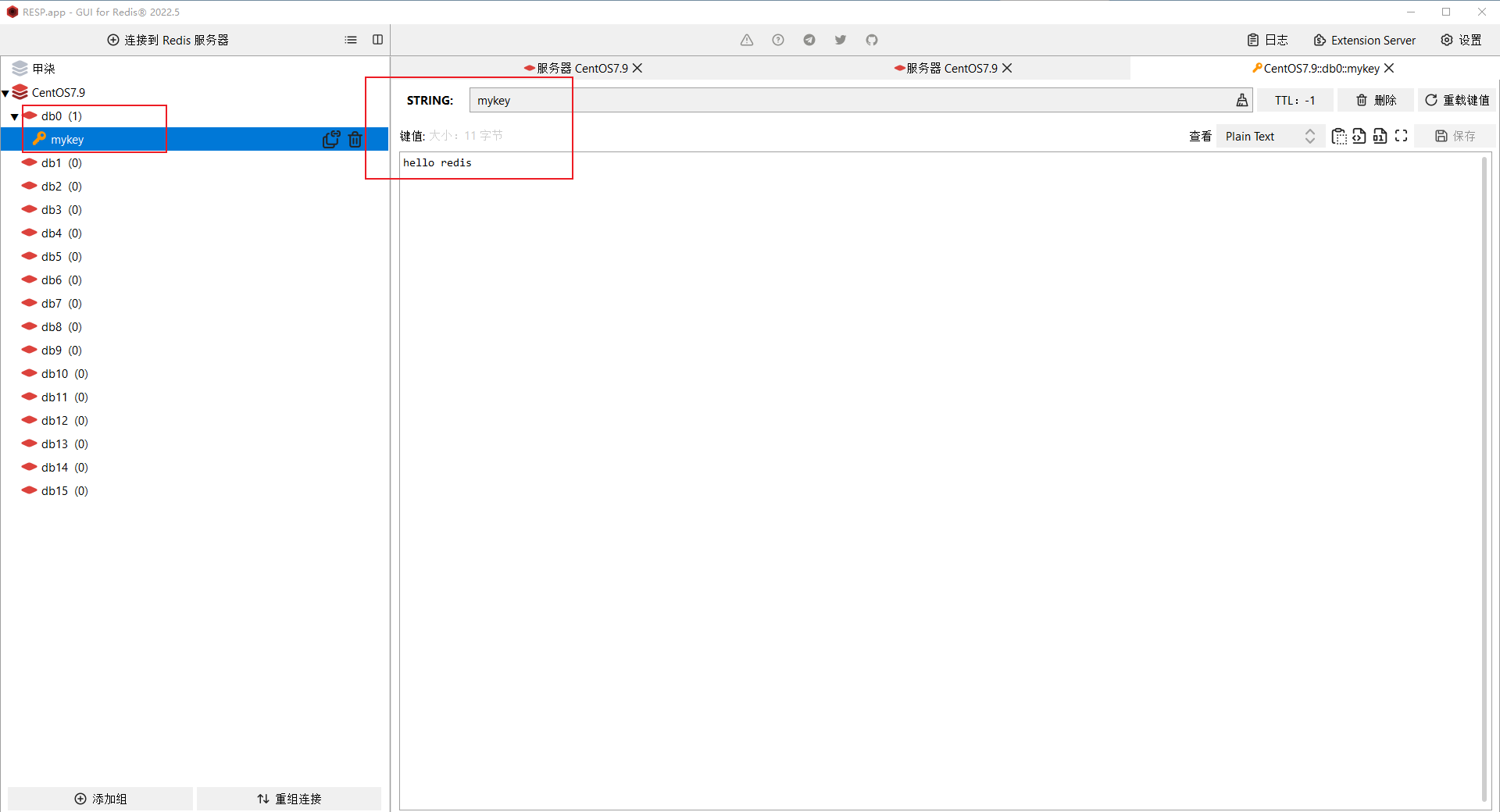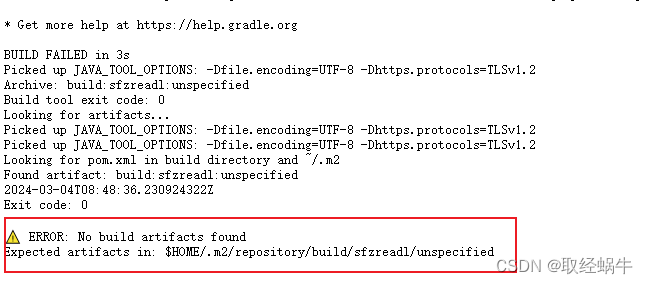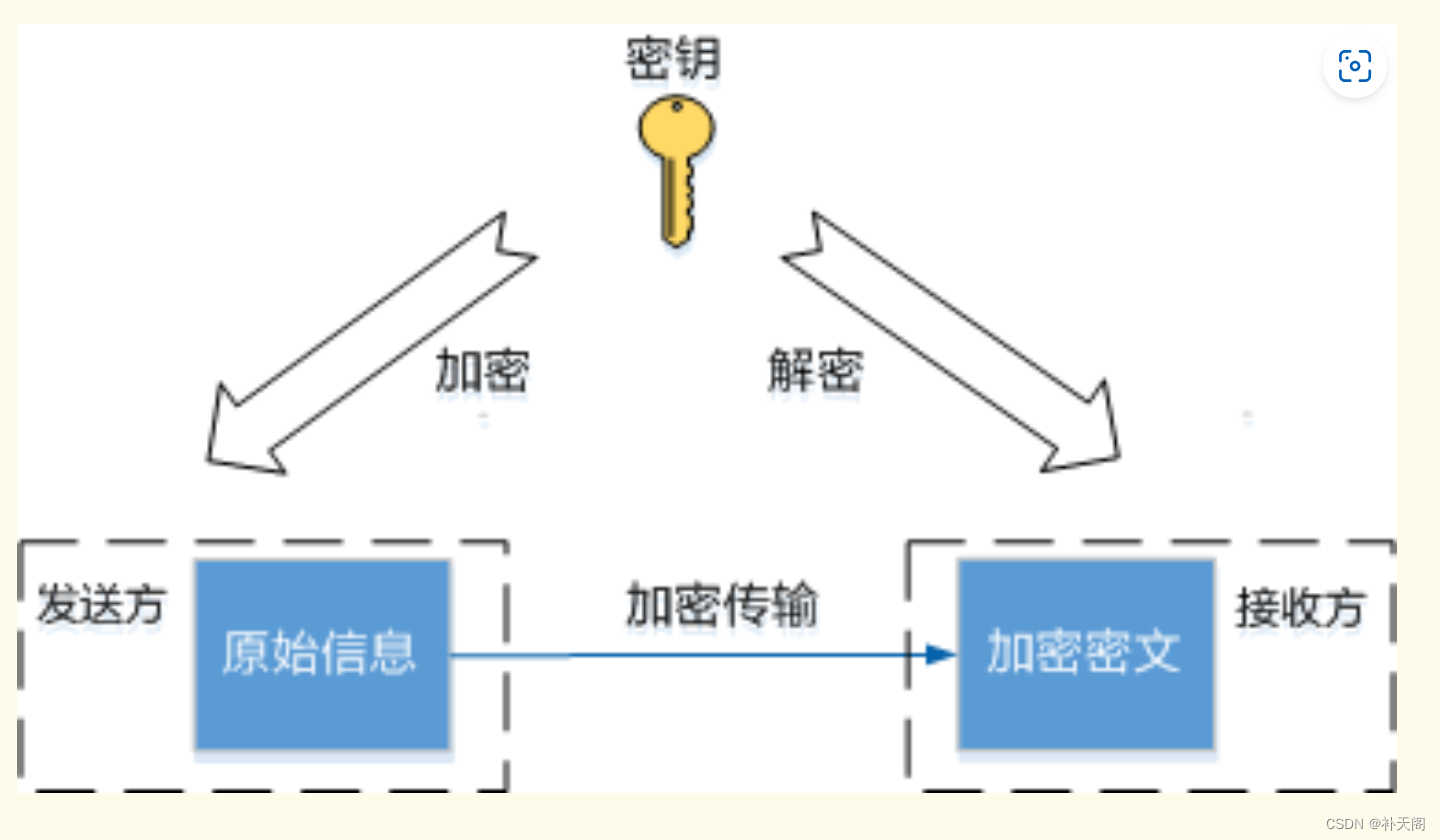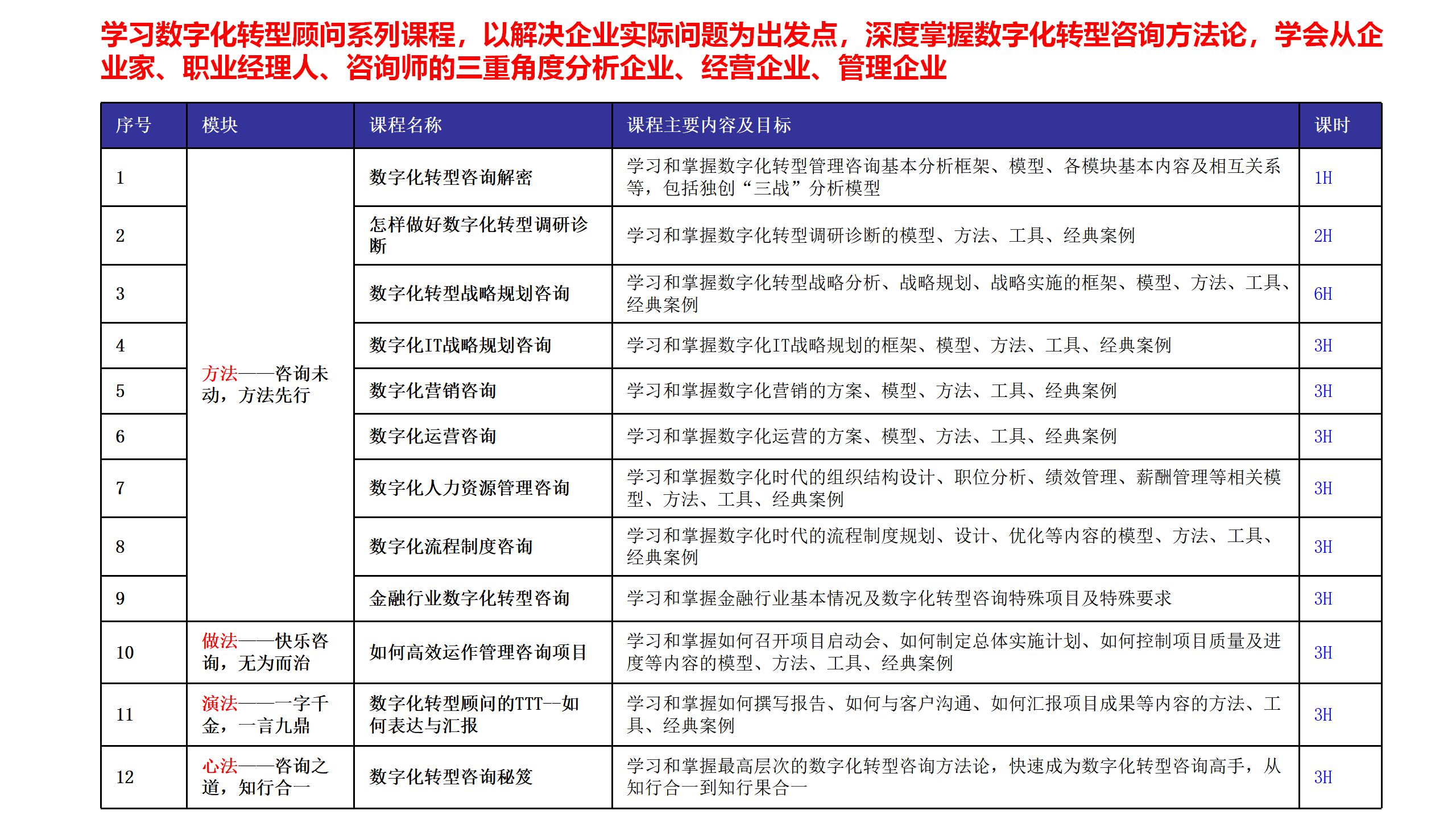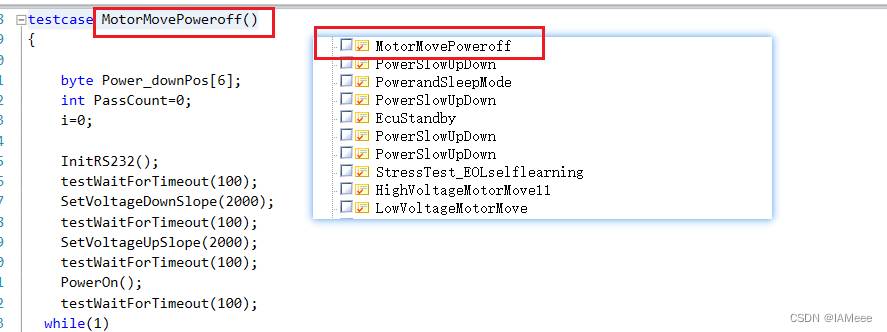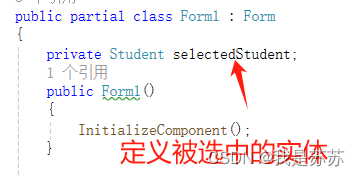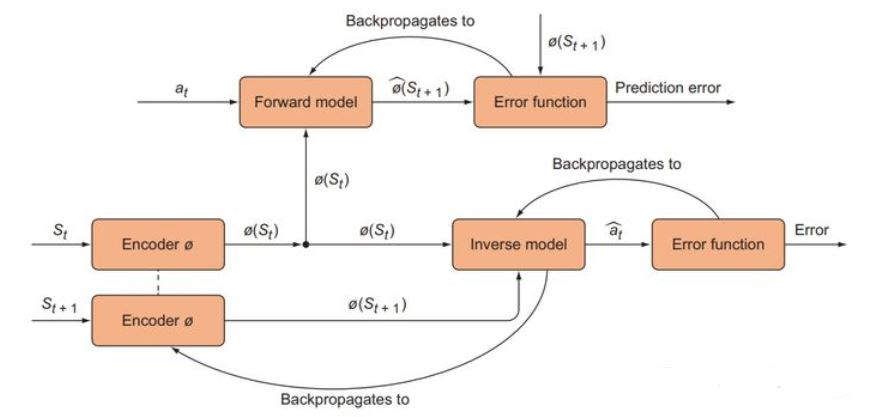目录
- 一、力扣235.二叉搜索树的最近公共祖先
- 1.1 题目
- 1.2 思路
- 1.3 代码
- 二、力扣701.二叉搜索树中的插入操作
- 2.1 题目
- 2.2 思路
- 2.3 代码
- 三、力扣450.删除二叉搜索树中的节点
- 3.1 题目
- 3.2 思路
- 3.3 代码
- 3.4 总结
一、力扣235.二叉搜索树的最近公共祖先
1.1 题目
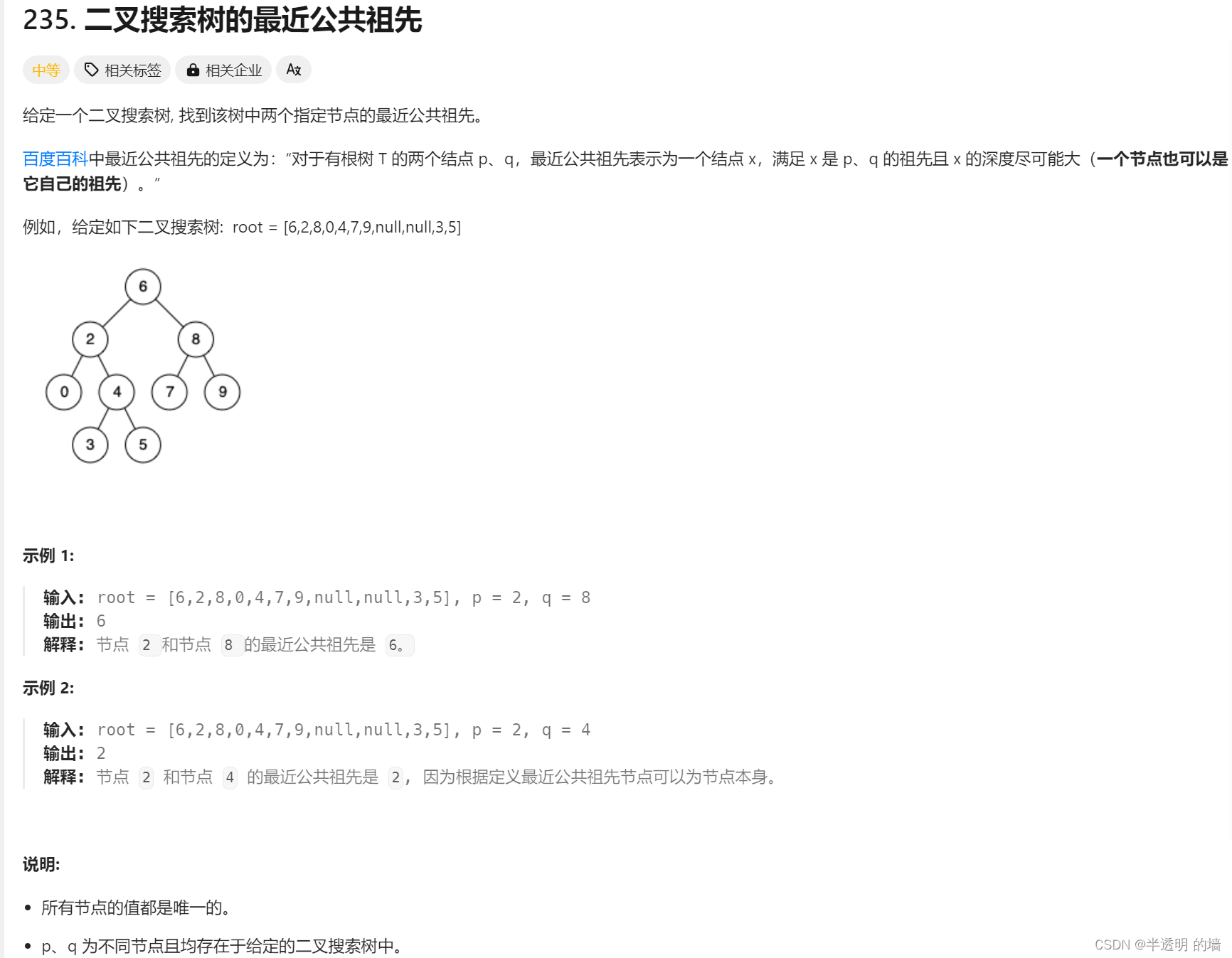
1.2 思路
利用二叉搜索树的有序特性来实现:
如果cur大于pq:向左搜索;
如果cur小于pq:向右搜索;
如果介于两者之间:则找到!
1.3 代码
递归法:
class Solution {
public TreeNode lowestCommonAncestor(TreeNode root, TreeNode p, TreeNode q) {
//递归法
if(root == null){
return null;
}
return traversal(root,p,q);
}
public TreeNode traversal(TreeNode root,TreeNode p,TreeNode q){
//和上题类似,第二种情况也包含在了处理逻辑里
if(root.val < p.val && root.val < q.val){
return traversal(root.right,p,q);
}
if(root.val > p.val && root.val > q.val){
return traversal(root.left,p,q);
}
//当前节点介于[p,q] 闭区间
return root;
}
}
迭代法:
class Solution {
public TreeNode lowestCommonAncestor(TreeNode root, TreeNode p, TreeNode q) {
//迭代
if(root == null){
return null;
}
TreeNode cur = root;
while(true){
if(cur.val > p.val && cur.val > q.val){
cur = cur.left;
continue;
}
if(cur.val < p.val && cur.val < q.val){
cur = cur.right;
continue;
}
return cur;
}
}
}
二、力扣701.二叉搜索树中的插入操作
2.1 题目
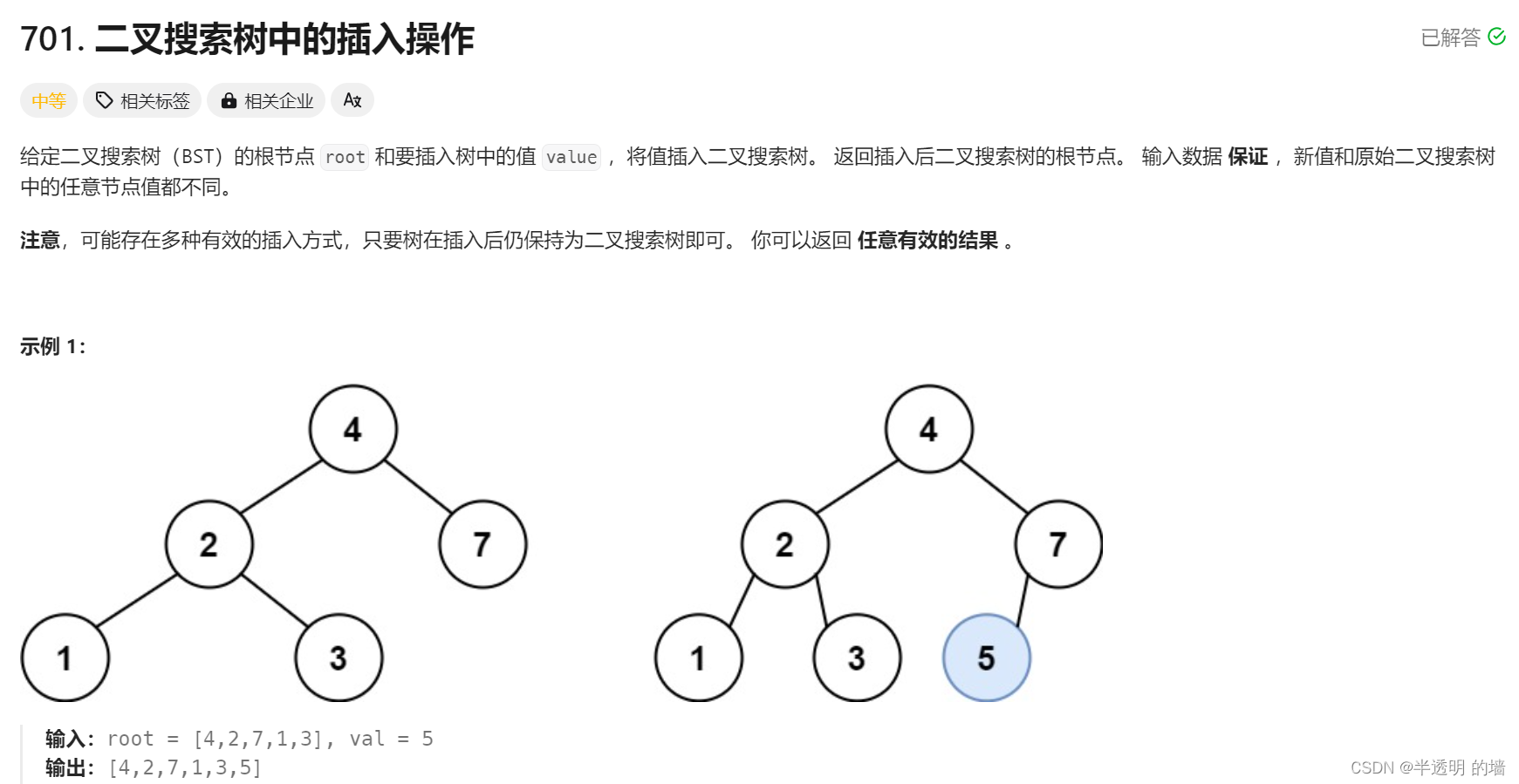
2.2 思路
根据二叉搜索树的特性,比大小向下遍历,直到找到null,将其new一个新的结点插入进去。
2.3 代码
自己的思路:
class Solution {
public TreeNode newnode;
public TreeNode insertIntoBST(TreeNode root, int val) {
//比大小来遍历寻找该插入的位置
if(root == null){
return new TreeNode(val);
}
traversal(root,val);
return root;
}
public void traversal(TreeNode root,int val){
if(val > root.val){
if(root.right == null){
newnode = new TreeNode(val);
root.right = newnode;
return;
}
traversal(root.right,val);
}
if(val < root.val){
if(root.left == null){
newnode = new TreeNode(val);
root.left = newnode;
return;
}
traversal(root.left,val);
}
}
}
三、力扣450.删除二叉搜索树中的节点
3.1 题目
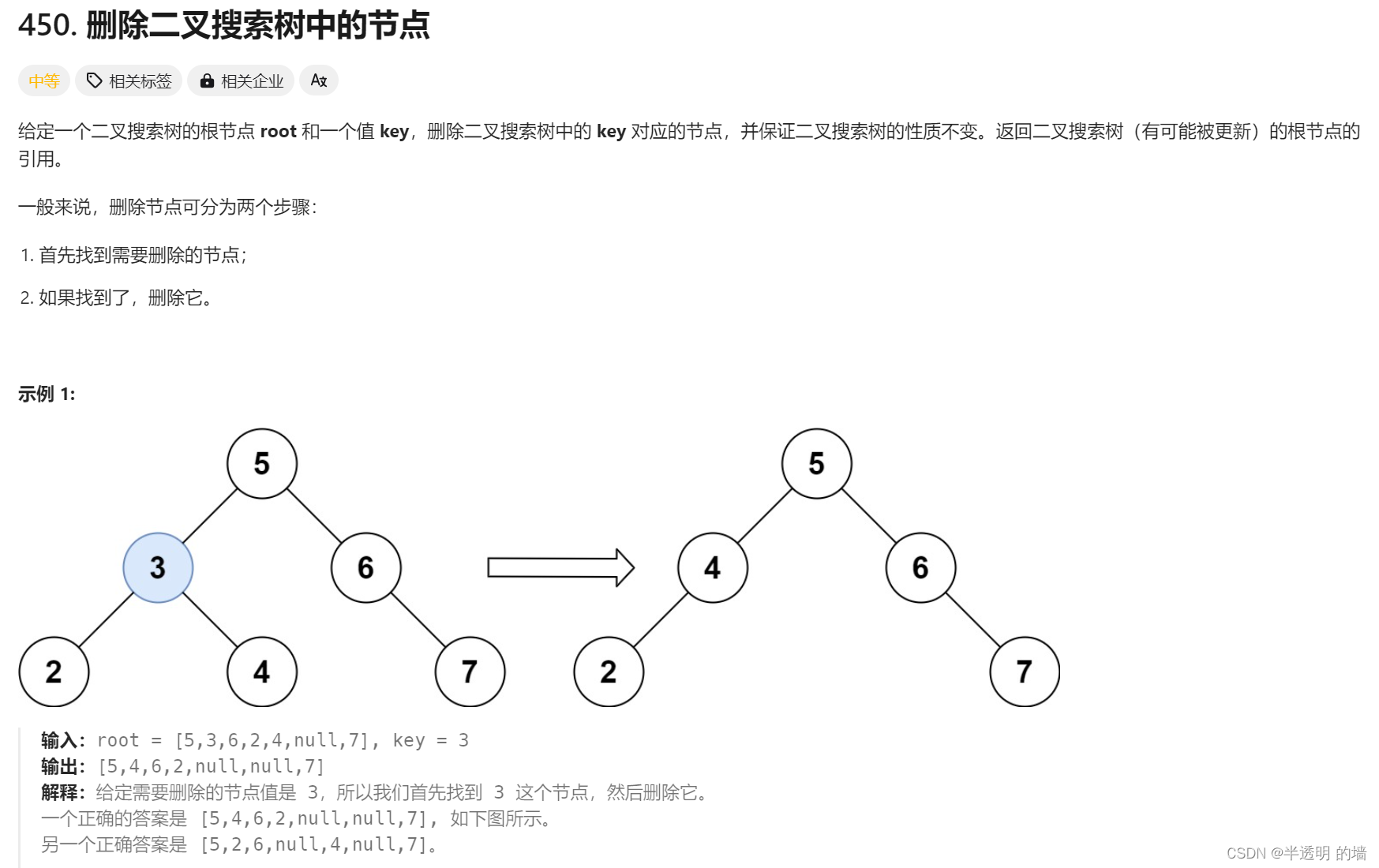
3.2 思路
梳理本题的五种情况:
(1)没有找到该节点
(2)找到了该节点,该节点的左右孩子均为空
(3)找到了该节点,该节点的左孩子为空,右孩子不为空
(4)找到了该节点,该节点的左孩子不为空,右孩子为空
(5)找到了该节点,该节点的左右孩子均不为空(最关机键的点):见下图
3.3 代码
class Solution {
public TreeNode deleteNode(TreeNode root, int key) {
//确定递归的终止条件
//没有找到该节点
if(root == null){
return null;
}
//找到了该节点
if(root.val == key){
if(root.left == null && root.right == null){
return null;
}else if(root.left != null && root.right == null){
return root.left;
}else if(root.left == null && root.right != null){
return root.right;
}else{
//假设root的右子树上位,那么需要将root的左子树插入root的右子树中,再返回右子树
TreeNode cur = root.right;
while(cur.left != null){
cur = cur.left;
}
cur.left = root.left;
return root.right;
}
}
//单层递归逻辑
if(key > root.val){
root.right = deleteNode(root.right,key);
}
if(key < root.val){
root.left = deleteNode(root.left,key);
}
return root;
}
}
3.4 总结
(1)五种情况的分析;(递归终止条件)
(2)不用双指针pre,而是将处理后的结点回溯返回给上层节点接住。(单层递归逻辑)
